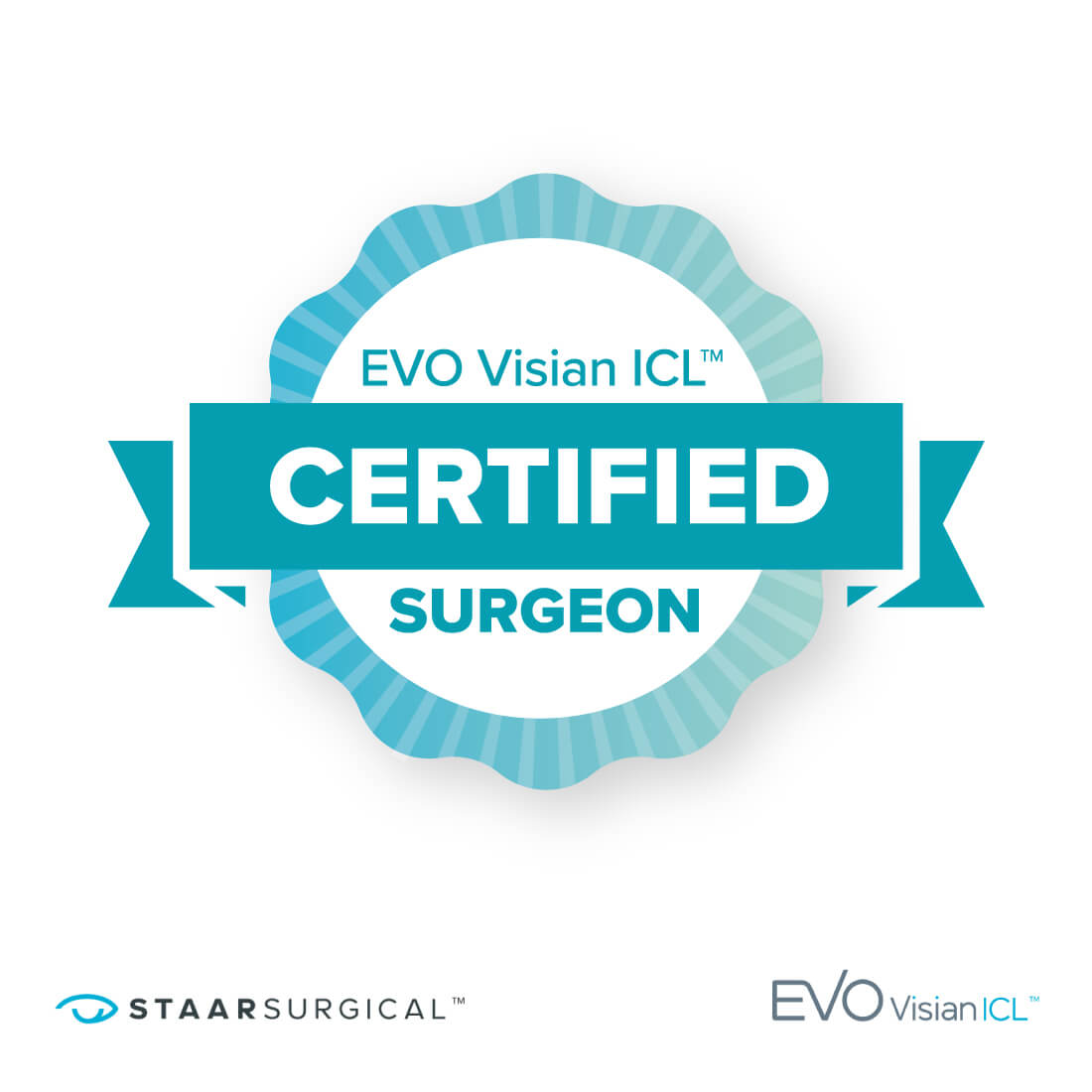A LASIK / PRK Alternative: the ICL (Implantable Collamer Lens)
While a greater number of patients are candidates for PRK than Lasik, not everyone is a PRK candidate.

Several reasons include:
- The amount of correction needed is too high.
-
The cornea is too thin.
- The cornea is irregularly shaped or there is concern for a disease known as keratoconus.
-
The nighttime pupils are too large.
-
The eyes are too dry.
-
There are systemic diseases (diabetes, autoimmune) that make it difficult to otherwise heal from LASIK / PRK.
If any of these conditions prevent you from getting LASIK or PRK, an ICL may be a great alternative if you are between the ages of 21 to 45.
About the ICL:
An ICL is a special designed lens, called a phakic intraocular lens. This means it is inserted inside your eye and works with your natural human lens to help you see better. This phakic lens has a specifically calculated power to correct your vision from within your eye.
Unlike a contact lens which corrects your vision by sitting on the surface of your cornea, the ICL corrects your vision from inside your eye. This results in a very natural vison. Unlike a contact lens which has to be removed and cared for, the ICL is not removed and you cannot feel it. Furthermore, unlike a contact lens, it does not cause dry eyes.
The most up-to-date model ICL we are currently implanting is the EVO ICL by Staar Surgical.
The ICL Procedure:
 The ICL is inserted into the eye behind the colored part of the
The ICL is inserted into the eye behind the colored part of the
eye, called the iris. It rests in front of the human lens and is not visible to the naked eye. The procedure is done using sedation in a sterile operating room at our surgical center Seashore Surgical Institute. It typically takes about 10 minutes and most patients are seeing well within an hour.
Common Questions:

Who is a candidate for the ICL?
Patients who are;
-
near sighted with or without astigmatism.
-
between 21-45 years of age.
-
not pregnant.
-
willing to keep follow up appointments.
How long have ICLs been in use?
-
Nearly 2 decades.
What is an ICL made out of?
-
The ICL material is a special biocompatible proven material for the eye, called Collamer. Collamer contains a natural substance called collagen.
Is the ICL FDA approved?
-
Yes. The ICL is also approved in Europe, Japan and most countries.
How many people have had the ICL implanted in their eye?
-
Over one million.
Can the ICL correct astigmatism?
-
Yes, to up 4 diopters. For patients with larger amounts of astigmatism we are able to correct the residual astigmatism using our in-office laser.
How long does it take to see after an ICL?
-
Most patients see within seconds after the procedure with the majority of vision being present in under an hour.
What advantages does a ICL offer over laser correction?
-
Offers UV protection
-
Does not cause dry eye like LASIK
-
Preserves consuming cornea tissue by avoiding laser treatment
-
Larger range of vison correction possible
-
Sharper vison for higher levels of vision correction
-
Reversible unlike laser vison correction
Does ICL surgery have risks?
-
Yes. All surgery has risks. The risks of ICL surgery are different than laser vision correction, but as in laser vision correction, when properly done is considered a safe procedure.
Experience:
Dr. Hedaya has been performing ICL surgery for nearly two decades and was the first surgeon in Ocean County to use the ICL. He maintains a special evaluation process necessary to determine good candidates and excellent results.
Patient testimonials:
